Drevlianskyi Strict Nature Reserve
The nature reserve protects a forest and mire complex located on the southern edge of the Polesia lowland, between the Uzh-Zherev and the Uzh-Zvizdal rivers.
This landscape is a patchwork of plains, sandy stretches, and swamps. Here we find a unique mosaic of northern mires and southern oak forests, shaped by postglacial landscapes. The floodplain of the Uzh river, mostly marshy and peaty, is dominated by grasslands.
Between the forests lie patches of farmlands abandoned after the Chornobyl nuclear disaster. They have slowly returned to wasteland. The area remains heavily contaminated with radionuclides. Meanwhile, the nature thrives here taking the advantage of the absence of human activity.
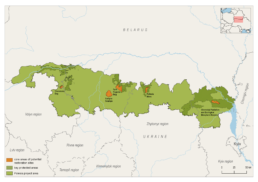
Country: Ukraine
Area: 30,872 ha
National protection status: Strict Nature Reserve
International protected status: Emerald Network (UA0000172) - Drevlianskyi Nature Reserve (32,178 ha); Partly within the IBA (UA111) - Uzh river valley.
800 species
of vascular plant recorded in the area
8 key habitats
Listed in Resolution #4 of the Standing Committee to the Bern Convention
>220 species
of fauna occur in the area
Land cover
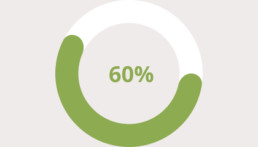
Forests
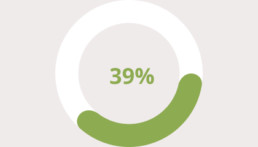
Mires

Others
Biodiversity and natural values


Habitats
The area hosts a diversity of wetland and woodland habitats. At least 8 of them require specific protection under the Bern Convention (Resolution No 4 of the Standing Committee to the Bern Convention):
Aquatic and Wetland Habitats
- Floating mats of Salvinia natans (3150),
- Transitional mires and quaking bogs (7140),
- Beds of large sedges (usually without free-standing water),
- Moist or wet eutrophic and mesotrophic grasslands (6440),
- Moist or wet tall herb and fern fringes and meadows (6430);
Woodland Habitats
- Riverine scrub,
- Thermophilous deciduous woods (91I0) ,
- Acidophilous oak-dominated woods (9190).

Biodiversity
The fauna of the protected area is understudied. Nevertheless, according to the preliminary research, 42 species of mammals, 188 species of birds, 7 species of reptiles, 11 species of amphibians, 17 species of fish and one species of cyclostomes were registered here.
The reserve provides vital habitats for many rare and protected species of flora and fauna. More than 40 species are included in the Resolution No 6 of the Standing Committee to the Bern Convention. The area is particularly important for the conservation of such fauna and flora species as the Hazel Grouse (Bonasa bonasia), the Nightjar (Caprimulgus europaeus), the Black Stork (Ciconia nigra), the Short-toed Eagle (Circaetus gallicus), the Montagu’s Harrier (Circus pygargus), the European Roller (Coracias garrulous), the White-backed Woodpecker (Dendrocopos leucotos), the Black Woodpecker (Dryocopus martius), the Pygmy Owl (Glaucidium passerinum), the Crane (Grus grus), the Red-backed Shrike (Lanius collurio), the Grey-headed Woodpecker (Picus canus), the Woodlark (Lullula arborea), the Great Grey Owl (Strix nebulosa), the Black Grouse (Tetrao tetrix tetrix), the Eastern Pasqueflower (Pulsatilla patens), the Yellow Azalea (Rhododéndron lúteum).
The following species have also been recorded here: the Little Crake (Porzana parva), the Barred Warbler (Sylvia nisoria), the European Pond Turtle (Emys orbicularis), the European Otter (Lutra lutra), the European Beaver (Castor fiber), the Wolf (Canis lupus), the Lynx (Lynx lynx), the Barbastela (Barbastella barbastel).

The most important impacts and threats
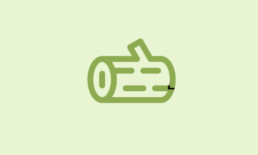
Forest felling and dead wood removal

Poaching

Artificial reforestation

Wildfires
Protection and conservation needs
In the Drevlianskyi Strict Nature Reserve, economic activities are banned almost on the entire area. To enhance the conservation of the natural values of the strict nature reserve, the following measures are necessary:
- Compilation of a detailed inventory of species’ habitat and natural habitat;
- Consistent monitoring of the conservation values;
- Development of a management or conservation plan.
Our activities in the area
As part of the “Polesia – Wilderness Without Borders” project, the Drevlianskyi Landscape Reserve – adjacent to the Drevlianskyi Strict Nature Reserve – was expanded by 119 hectares. This expansion enhances ecological connectivity, forming a unified protected area alongside the Chornobyl Biosphere Reserve.
To monitor the distribution and abundance of large mammals in the region, camera traps have been installed across the project area.
Additionally, various equipment, including GPS devices, office supplies, and weather stations, has been procured to support the reserve’s ongoing activities.
Since the onset of the war, funds have been raised to support Polesian protected areas that have been directly impacted or are housing Internally Displaced People. The Drevlianskyi Strict Nature Reserve has received regular financial assistance to cover essential costs, including fuel, vehicle maintenance, building upkeep, services (such as rent and telecommunications), and office supplies.
Currently, we provide ongoing support to the Drevlianskyi Nature Reserve, primarily covering operational costs such as fuel. In addition, we offer free vehicle maintenance and repairs through a mobile car workshop, ensuring the reserve’s operations run smoothly.
To enhance the reserve’s biodiversity monitoring efforts, we have supplied high-quality equipment, including binoculars, scopes, mobile phones and others. Moreover, we are introducing the SMART monitoring system, further strengthening the reserve’s ability to track and protect its diverse wildlife.
We also provide the reserve with crucial emergency equipment, such as fire-fighting gear, to help them respond quickly in case of any crises.


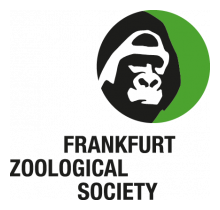
The project “Polesia – Wilderness Without Borders” is part of the Endangered Landscapes & Seascapes Programme and is funded by Arcadia. The project is coordinated by Frankfurt Zoological Society (FZS).

